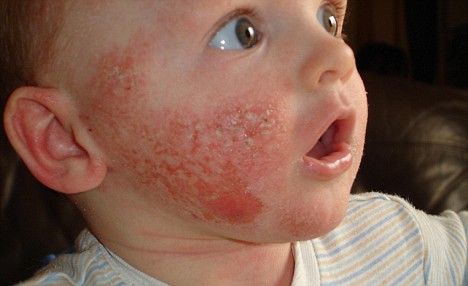1. Conserve Water
The little things can make a big difference. Every time you turn off the water while you're brushing your teeth, you're doing something good. Got a leaky faucet? You might be dripping as much as 90 gallons (340 liters) of water down the drain every day [source: EPA]. So fix it! It's easy and cheap. And stop drinking bottled water. Switch to filtered tap water. You'll save a ton of cash and help reduce a ton of plastic waste in the process.
2. Be Car-conscious
If you can, stay off the road two days a week or more. You'll reduce greenhouse gas emissions by an average of 1,590 pounds (721 kilograms) per year [source: EPA]. It's easier than you think. You can combine your errands — hit the school, grocery store and dog daycare in one trip. And talk to your boss about teleworking. It's a boon for you and your company. But being car conscious also means maintaining your car on a regular basis. You can improve your gas mileage by 0.6 percent to 3 percent by keeping your tires inflated to the proper pressure, and be sure to make necessary repairs if your car fails emission [source: EPA].
3. Walk, Bike or Take Public Transit
Walking and biking are obvious ways to reduce greenhouse gases. Plus you'll get some good cardio and burn some calories while you do it. If you live in an area that's not walkable, take advantage of your local mass transit if you can. Or carpool. Even one car off on the road makes a difference.
4. Reduce, Reuse, Recycle
You can help reduce pollution just by putting that soda can in the recycling bin. It really does make a difference. Paper, too. The average American household dumps 13,000 separate pieces of paper each year, most of it junk mail and packaging [source: University of Southern Indiana]. But you can also take reusable bags to the grocery, and avoid using disposable plates, spoons, glass, cups and napkins. Contact companies that send you junk mail to get off their mailing lists. When you order online, see if you can group your packages together for mailing. Buy products that are made of recycled materials. And don't forget to recycle your own paper. It all makes a difference.
5. Give Composting a Try
In 2018, (the last year figures were available) Americans generated 292.4 million tons (265.3 million metric tons) of trash. Only 25 million tons (23 million metric tons) of that was composted. Some was recycled and some was combusted for energy, but half of it — 146 million tons (132 million metric tons) — ended up in the landfill. Imagine if you could divert more of that to your own compost? It would help reduce the amount of solid waste you produce, and what eventually winds up in your local landfill. Plus, compost makes a great natural fertilizer.
6. Switch to LEDs
Compact fluorescent light bulbs (CFLs) are great. They can last 10 times longer than incandescent bulbs and they use at least two-thirds less energy, but even CFLS have issues. They're hard to dispose of because they contain mercury. Enter light-emitting diode, or LED bulbs. They emit light in a very narrow band wavelength so they're super energy-efficient. Start replacing your old incandescent bulbs with LED bulbs now (if you haven't already). They do cost more than CFLs and incandescents, but equivalent LED bulbs can last at least 30,000 hours compared to 1,000 hours for incandescent bulbs, or 8,000 to 10,000 hours for CFLs.
7. Live Energy Wise
Make your home more energy efficient (and save money). Your home's windows are responsible for 25 to 30 percent of residential heat gain and heat loss. If they're old and inefficient, consider replacing them. Also be sure your home has proper insulation. Insulation is measured in terms of its thermal resistance or R-value — the higher the R-value, the more effective the insulation. The amount of insulation your home needs depends on the climate, type of HVAC system, and where you're adding the insulation. Smaller things you can do right away include replacing your air filter regularly so your HVAC system doesn't have to work overtime. Keep your window treatments closed when it's extremely hot and cold outside. You can also consider installing a programmable thermostat like Nest so your system isn't running (and wasting energy) when you're not home.
8. Eat Sustainable Foods
Today, large-scale food production accounts for as much as 25 percent of the greenhouse emissions. So how do you eat sustainably? Choosing food from farmers that aim to conserve the natural resources and have as little impact on the land as possible. But even buying as much as you can from local farmers makes a different. Eating more whole grains, vegetables, fruits and nuts, and less red meats and processed foods does too. Grow your own fruits and vegetables. You can grow a garden!
9. Plant a Tree (or Two)
The 2022 United Nations' Intergovernmental Panel on Climate Change (IPCC) report found that things are worse now than ever before. Greenhouse gas emissions continue to rise and most countries are not reducing carbon emissions. But there is a natural way to combat climate change: Plant a tree. Plants naturally absorb carbon from the air. One young tree can absorb CO2 at a rate of 13 pounds (5 kilograms) per tree. Every. Single. Year. And that's just an itty bitty baby tree. Once that tree reaches about 10 years old, it's at its most productive stage of carbon storage. Then it can absorb 48 pounds (21 kilograms) of CO2 per year. Trees also remove all other kinds of junk from the air, including sulfur dioxide, nitrogen oxides and small particles. So go ahead, plant a tree. It's good for everybody.
10. Give Up Plastics
The statistics are shocking: People around the world buy 1 million plastic drinking bottles every minute, and use up to 5 trillion single-use plastic bags every year. Humans are addicted to plastic, and hardly any of it — about 9 percent — gets recycled. A staggering 68 to 219 million tons (75 to 199 million metric tons) of plastic is currently in our oceans. Break the cycle. Stop buying bottled water. Say no to plastic shopping bags and use cloth bags instead. Don't use plastic straws. Drink from a reuseable cup instead of a plastic one. Avoiding plastic can divert a ton of waste from the oceans and landfill.
By: Katie Lambert & Sarah Gleim
.jpg)








kat rumah ni mamanya sorang aje yg asingkan sampah..yang lain semua toing masuk satu tong aje... mama juga yang pungut asingkan...pitam mama nya
BalasPadamkat rumah saya memang ayah saya buat baa kompos. menjadi jugak pokok-pokok
BalasPadamSetiap ulasan yang ditulis adalah dibawah tanggungjawab yang memberi komen. Sekiranya mahu berhubung dengan saya, hubungi saya di blogsyaznirahim@gmail.com :)
Every comment written is under the responsibility of the commenter. If you want to contact me, reach me at blogsyaznirahim@gmail.com :)
Apa yang saya tulis di blog ini dahulu, saya sendiri mungkin sudah tidak bersetuju dengan content itu pada hari ini. Semestinya segala penulisan dalam blog ini tidak sesuai untuk dijadikan rujukan (citation/reference) dalam penulisan artikel / jurnal saintifik. Pemilik blog tidak bertanggungjawab sekiranya isi kandungan blog ini diambil sebagai rujukan akademik.
What I wrote on this blog before, I may not agree with the content today. Certainly all writing in this blog is not suitable to be used as a reference (citation/reference) in the writing of scientific articles/journals. The owner of the blog is not responsible if the content of this blog is taken as an academic reference.
Disclaimer: Unauthorized Use of Photos
All photos on this blog are the exclusive property of syaznirahim.com. These images may not be downloaded, copied, reproduced, or used in any form without prior written permission from the owner. Unauthorized use of these photos is strictly prohibited and may result in legal action. If you wish to use any of the photos, please contact me for permission and licensing terms. Thank you for respecting our rights and the privacy of the individuals depicted.
Penafian: Penggunaan Foto Tanpa Kebenaran
Semua foto di blog ini adalah hak milik eksklusif syaznirahim.com. Imej-imej ini tidak boleh dimuat turun, disalin, dihasilkan semula, atau digunakan dalam apa-apa bentuk tanpa kebenaran bertulis daripada pemilik. Penggunaan foto-foto ini tanpa kebenaran adalah dilarang keras dan boleh mengakibatkan tindakan undang-undang. Jika anda ingin menggunakan mana-mana foto, sila hubungi saya untuk mendapatkan kebenaran dan syarat pelesenan. Terima kasih kerana menghormati hak kami dan privasi individu yang digambarkan.